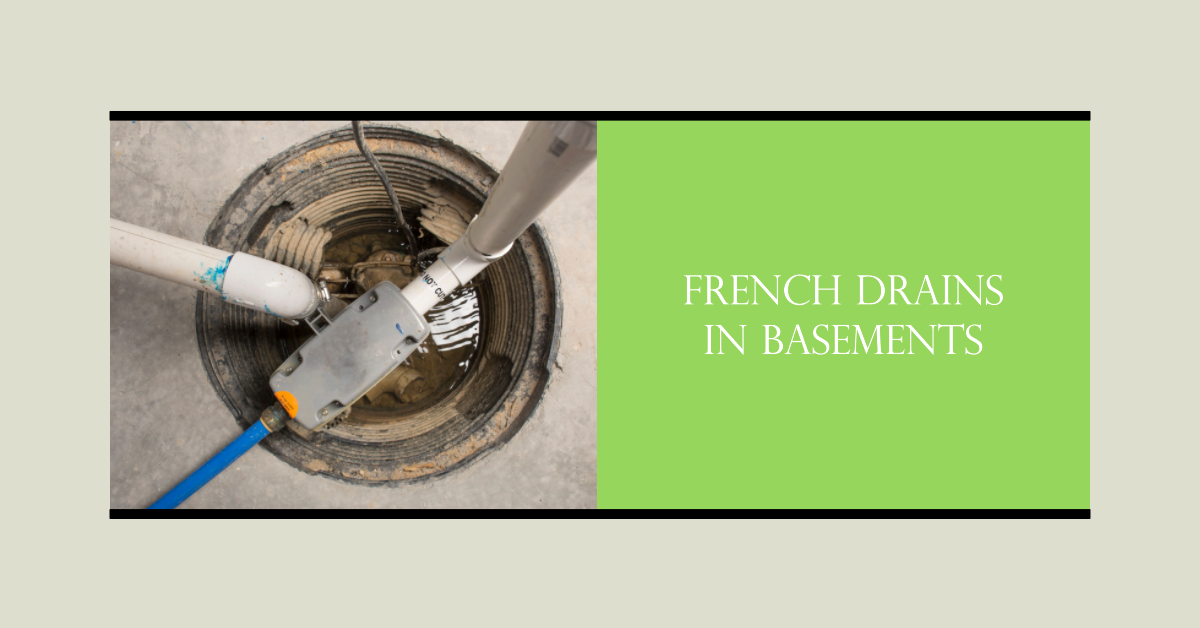I am a well-rounded expert with proficiency in several fields. My experience spans from being a dedicated chef and homemaker. As a passionate homesteader, I’ve honed my skills in sustainable living and animal care, ensuring a holistic approach to everything I undertake. Email me or Txt: (# removed due to spam, please email)
If you’ve ever experienced water problems in your basement, you may have heard of French drains. These innovative drainage systems can be an effective way to manage water issues and protect your basement from water damage.
In this article, we’ll explore what French drains are, how they work, and the benefits of installing one in your basement. We’ll also discuss the costs involved and the advantages of combining a French drain with a sump pump.

What is a French Drain?
A French drain is a trench filled with gravel or rock containing a perforated pipe that redirects surface and groundwater away from an area, such as a basement.
The primary purpose of a French drain is to prevent water from seeping into your home, thus avoiding potential damage and mold growth.
French drains can also help to alleviate soil erosion and flooding by directing water away from a specific area.
They are commonly used in landscaping and construction projects and can be installed around the perimeter of a home or along a retaining wall.
French drains are typically low-maintenance and can provide long-lasting protection against water intrusion.

Advantages of Installing a French Drain in a Basement
There are several benefits to installing a French drain in your basement. Firstly, it can help prevent water damage and mold growth, which are significant issues for many homeowners.
By keeping your basement dry, you can also improve air quality and reduce humidity levels, making the space more comfortable and healthier.
Bonus, a well-functioning French drain can increase your property’s value and create a more usable basement space.
A French drain can also be a cost-effective solution compared to other basement waterproofing methods, such as excavating and sealing the foundation.
It’s also relatively low-maintenance, requiring only occasional inspection and cleaning to ensure proper function.
Finally, installing a French drain can provide peace of mind, knowing that your basement is protected from water damage and its associated problems.

French Drain Installation Costs
The cost of installing a French drain in your basement can vary depending on several factors, such as the size of your basement, the complexity of the installation, and your geographical location.
On average, homeowners can expect to pay between $20 and $30 per linear foot for a professionally installed French drain.
While this might seem like a substantial investment, it’s essential to weigh the costs against the potential damage and expenses that water issues can cause in the long run.
It’s important to note that the actual cost of installation can vary significantly based on the specific requirements of your basement and the contractor you choose.
Additional costs may include excavation, grading, and the cost of materials such as the perforated pipe, gravel or rock fill, and any necessary fittings or connectors.
If your basement requires significant repairs or waterproofing measures, the cost of installation may be higher. It’s recommended to obtain multiple quotes from reputable contractors to ensure you’re getting a fair price for the installation.

French Drain in Basement with Sump Pump
A sump pump is a device that removes water that has accumulated in a sump pit, usually found in basements.
When combined with a French drain, a sump pump can offer even greater protection against water damage.
The French drain collects the water and directs it to the sump pit, where the sump pump then expels it away from your home.
This combination can be especially effective in areas with high water tables or during heavy rainfall.
Having a French drain and sump pump installed in your basement can provide additional peace of mind and protect your home from costly water damage.
It’s important to have these systems professionally installed and maintained to ensure they function correctly and effectively.

DIY vs. Hiring Professionals for French Drain Installation
While it’s possible to install a French drain yourself, there are pros and cons to consider.
A DIY installation can save you money, but it can also be time-consuming and labor-intensive. Additionally, if not installed correctly, it may not effectively protect your basement. It may also impact your insurance and or home value.
Hiring a professional to install your French drain can ensure that the job is done correctly and efficiently. To find a reliable contractor, ask for recommendations from friends and family or search for reviews online.
In conclusion, French drains can be an invaluable addition to any basement prone to water issues. By understanding their purpose, benefits, and installation process, you can make an informed decision about whether a French drain is right for your home. Don’t let basement water problems get you down – consider installing a French drain to keep your space dry and comfortable.



